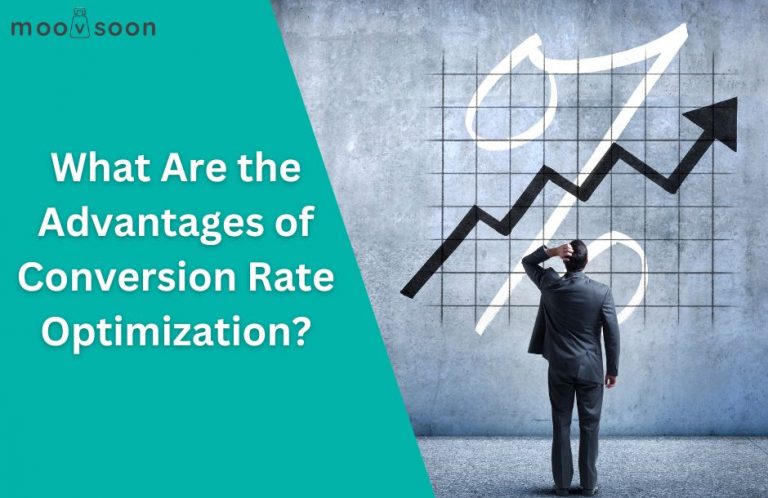
What Are the Most Important Keywords for Movers?
Understanding the essential keywords for movers is paramount in today’s highly competitive moving industry. Effective keyword usage can significantly enhance your online visibility, making it easier for potential clients to find your services. With the right keywords, you can connect with individuals actively searching for moving assistance, ensuring your business stands out in a crowded market.
The landscape of moving services has evolved dramatically over recent years. More people rely on digital platforms to find movers, which means that staying ahead of search trends is crucial. By keeping track of what potential customers are searching for, you can adapt your keyword strategy to align with their needs. This proactive approach not only helps capture the attention of interested clients but also increases your chances of conversion.

Why is keyword research crucial for moving companies?
Keyword research is essential for moving companies because it enhances their online visibility, connects them with potential customers, and boosts their competitive edge. By identifying and using the right keywords, moving companies can optimize their websites for search engines, ensuring they appear in relevant search results. This directly increases organic traffic and attracts clients actively seeking moving services.
Additionally, keyword research helps understand consumer behavior patterns and preferences, allowing companies to tailor their services and marketing strategies effectively. It also enables businesses to keep up with market trends and competitors, ensuring they remain relevant and appealing to their target audience.
How does proper keyword targeting increase website traffic?
Proper keyword targeting greatly boosts website traffic for moving companies by aligning with user search intent. Targeting the right keywords helps moving companies appear prominently in search results. By selecting keywords that potential customers use, such as “affordable movers” or “local moving services,” companies can improve visibility and attract more visitors.
Effective keyword research identifies high-traffic, low-competition terms, optimizing content to match what users are searching for. This leads to higher click-through rates and increased leads, ultimately driving business growth.
Why does poor keyword targeting lead to fewer customers?
Poor keyword targeting can greatly reduce customer acquisition for moving companies. When keywords don’t align with what potential customers are searching for, the company’s visibility on search engines decreases. This means fewer people see their services. Effective keyword research helps understand the terms and phrases customers use, ensuring the company’s content matches search queries.
This alignment increases the chances of appearing in top search results, leading to more website visits and potential customers. Additionally, using relevant keywords can enhance the user experience by providing content that directly addresses customer needs.
What tools can assist movers in effective keyword research?
Here is a list of essential tools that can enhance your keyword strategy.
- Google Keyword Planner: This free tool helps identify relevant keywords for your moving business. It provides data on search volume trends, allowing you to choose keywords with the highest potential for visibility.
- Ahrefs: Known for its powerful keyword analysis features, Ahrefs enables users to explore keyword difficulty and search volume. This helps movers select keywords that can effectively drive organic traffic to their websites.
- SEMrush: This tool offers insights into competitors’ keyword strategies. By analyzing what keywords competitors rank for, movers can identify gaps and opportunities to improve their own keyword targeting.
- Ubersuggest: This tool generates keyword variations based on your primary keywords. Ubersuggest helps movers discover long-tail keywords that can attract more specific searches, enhancing the chances of connecting with the target audience.
- AnswerThePublic: This innovative tool reveals common search queries related to your keywords. It helps movers understand what potential customers are asking, allowing them to create content that directly addresses these questions.
Using these tools can significantly enhance the effectiveness of your keyword research. By understanding search trends and analyzing competitors, movers can develop a targeted strategy that attracts more customers and grows their business.
How does Google Keyword Planner help identify relevant keywords?
Google Keyword Planner is an essential tool for movers seeking effective keyword research. It helps identify relevant keywords by analyzing search volumes, and competition levels, and suggesting related terms. By entering basic moving-related terms, movers can uncover trends and high-performing keywords specific to their services.
This aids in targeting potential customers more accurately, optimizing website content, and improving search engine rankings. Additionally, Google Keyword Planner provides insights into demographic data, enabling movers to tailor their marketing strategies to specific audiences. These features make it invaluable for creating a robust online presence in the moving industry.
What insights can Ahrefs provide for keyword analysis?
Ahrefs offers valuable insights for movers seeking effective keyword analysis. It provides tools like the Keywords Explorer, which helps identify relevant keywords by search volume, keyword difficulty, and click potential. This tool also reveals competitor keywords and traffic estimates, enabling movers to target high-impact terms.
Additionally, Ahrefs’ Content Gap tool identifies keywords competitors rank for but the user doesn’t, offering opportunities for content creation. These features help movers optimize their SEO strategy by focusing on keywords that drive traffic and conversions.
How does SEMrush aid in competitor keyword analysis?
SEMrush is an invaluable tool for movers aiming to conduct effective competitor keyword analysis. It offers features like the Keyword Gap tool, which identifies missed opportunities by comparing your keywords with those of competitors. SEMrush’s Organic Research section reveals competitors’ top-performing keywords, providing insights into successful strategies.
This tool also helps track keyword rankings over time, offering data-driven adjustments to improve visibility. By leveraging these capabilities, movers can fine-tune their SEO efforts, ensuring they rank higher in search results and attract more potential customers.
Why is Ubersuggest useful for keyword suggestions?
Ubersuggest is a valuable tool for movers seeking effective keyword research because it provides thorough keyword suggestions and insights. It helps identify relevant keywords by analyzing search volume, competition, and trends, enabling movers to target the right audience. The tool offers data on top-performing content and backlinks, which aids in understanding competitors’ strategies.
Additionally, Ubersuggest’s user-friendly interface and integration with Google Analytics make it convenient for tracking and adjusting SEO efforts. This tool enhances movers’ online visibility, attracting potential clients by optimizing their website content with targeted keywords.
How can AnswerThePublic reveal common search queries?
AnswerThePublic uncovers search queries by aggregating and visualizing common questions and phrases people use online. Movers can leverage this tool to identify key terms related to their services, such as “best moving companies” or “how to pack efficiently.” By analyzing these queries, movers can tailor their content and advertising strategies to align with what potential customers are actively searching for, increasing their visibility and engagement.
Additionally, using AnswerThePublic alongside other keyword research tools can enhance their approach by providing a thorough view of search behavior and trends.
What are the four types of search intent important for movers?
Understanding these types can greatly enhance a mover’s online strategy. Here’s a detailed look at each type of search intent:
- Transactional Intent: This type indicates that users are ready to make a purchase or hire a service. Movers should focus on keywords that reflect this intent, like “hire movers near me,” to capture these potential customers effectively.
- Informational Intent: Users displaying informational intent seek answers to specific questions, such as “how to pack for a move.” Creating content that addresses these common queries can help movers connect with potential clients seeking advice and tips.
- Navigational Intent: This intent relates to users searching for a specific brand or company. For movers, optimizing their online presence for brand-related searches, such as their company name, can enhance visibility and attract customers familiar with their services.
- Commercial Investigation Intent: This indicates users researching and comparing options before making a decision. Movers can benefit by providing detailed comparisons, reviews, and service breakdowns to guide these potential clients toward choosing their services.
Understanding these four types of search intent is crucial for movers. By tailoring their marketing strategies to these intents, movers can attract more clients, enhance their online visibility, and ultimately drive more conversions.
How does transactional intent indicate readiness to hire movers?
Transactional intent indicates a user’s readiness to hire movers by reflecting their immediate interest in making a purchase or booking a service. This type of intent is one of four key search intents important for movers.
The four types of search intent include:
- Informational Intent: Users seek information or answers to questions. For movers, this could involve researching moving tips or understanding moving costs.
- Navigational Intent: Users aim to reach a specific website or page, such as a particular moving company’s site for further details.
- Transactional Intent: Users are ready to complete a purchase or hire service, often using keywords like “hire movers” or “book moving services.”
- Commercial Investigation Intent: Users compare options or read reviews before making a decision, such as comparing different moving companies or their services.
Why is understanding informational intent vital for content creation?
Understanding informational intent is vital for content creation because it aligns content with what users actively seek. For movers, identifying the four types of search intent informational, navigational, transactional, and commercial investigation is necessary. Informational intent focuses on delivering useful knowledge, such as tips for preparing for a move. Navigational intent helps users find specific services, like local moving companies.
Transactional intent targets users ready to book a service, and commercial investigation aids those comparing options before deciding. Aligning content with these intents guarantees relevance, increases engagement, and enhances user satisfaction, ultimately driving business success.
How does navigational intent relate to brand-specific searches?
Navigational intent refers to users seeking specific websites or brands. In the context of movers, this intent is essential as it often involves searches for particular moving companies, such as “XYZ Movers” or “Best Movers in New York.” The four types of search intent important for movers include:
- Informational Intent: Users look for general moving advice or tips.
- Navigational Intent: Users aim to find a specific moving company or service.
- Transactional Intent: Users are ready to book a moving service.
- Commercial Investigation: Users compare different moving companies to make a decision.
Understanding these intents helps movers optimize their content and ads to match user needs effectively.
What does commercial investigation intent reveal about potential customers?
Commercial investigation intent reveals that potential customers are actively researching options before making a decision, indicating they are in the consideration phase of their purchasing journey.
For movers, understanding this intent is essential as it highlights the customer’s desire to compare services, prices, and reviews. The four types of search intent important for movers include:
- Informational Intent: Customers seek knowledge about moving services, such as what to expect during a move.
- Navigational Intent: Users look for specific mover websites or service providers.
- Transactional Intent: Potential customers are ready to hire a mover and seek direct services.
- Commercial Investigation Intent: Customers compare different moving companies, seeking reviews and pricing to make an informed choice.
How can understanding search intent improve SEO strategies for movers?
Understanding search intent can greatly enhance SEO strategies for movers by aligning content with what potential customers are actively seeking. By analyzing user queries, movers can tailor their website content to provide precise answers and solutions, improving visibility and engagement.
For example, if users frequently search for “affordable movers in [city],” incorporating these keywords and relevant content can boost search rankings. Additionally, understanding whether users seek tips, pricing, or specific services allows movers to create targeted pages, increasing conversion rates. This strategic alignment with search intent guarantees movers meet customer needs efficiently.
Conclusion
To summarize, optimizing SEO strategies for movers requires a solid grasp of search intent. By aligning your efforts with the needs and questions of potential clients, you ensure your business reaches the right audience effectively. Understanding keyword trends is crucial, as it highlights how potential clients’ searches evolve over time. This knowledge allows you to proactively adapt your content and keyword strategy, giving you a competitive advantage.
Additionally, conducting market analysis enhances your SEO approach by providing insights into industry dynamics. Gaining an understanding of the competitive landscape helps identify gaps and opportunities, allowing for a more tailored SEO strategy. This process includes choosing the best keywords and analyzing their performance in both local and national contexts.



